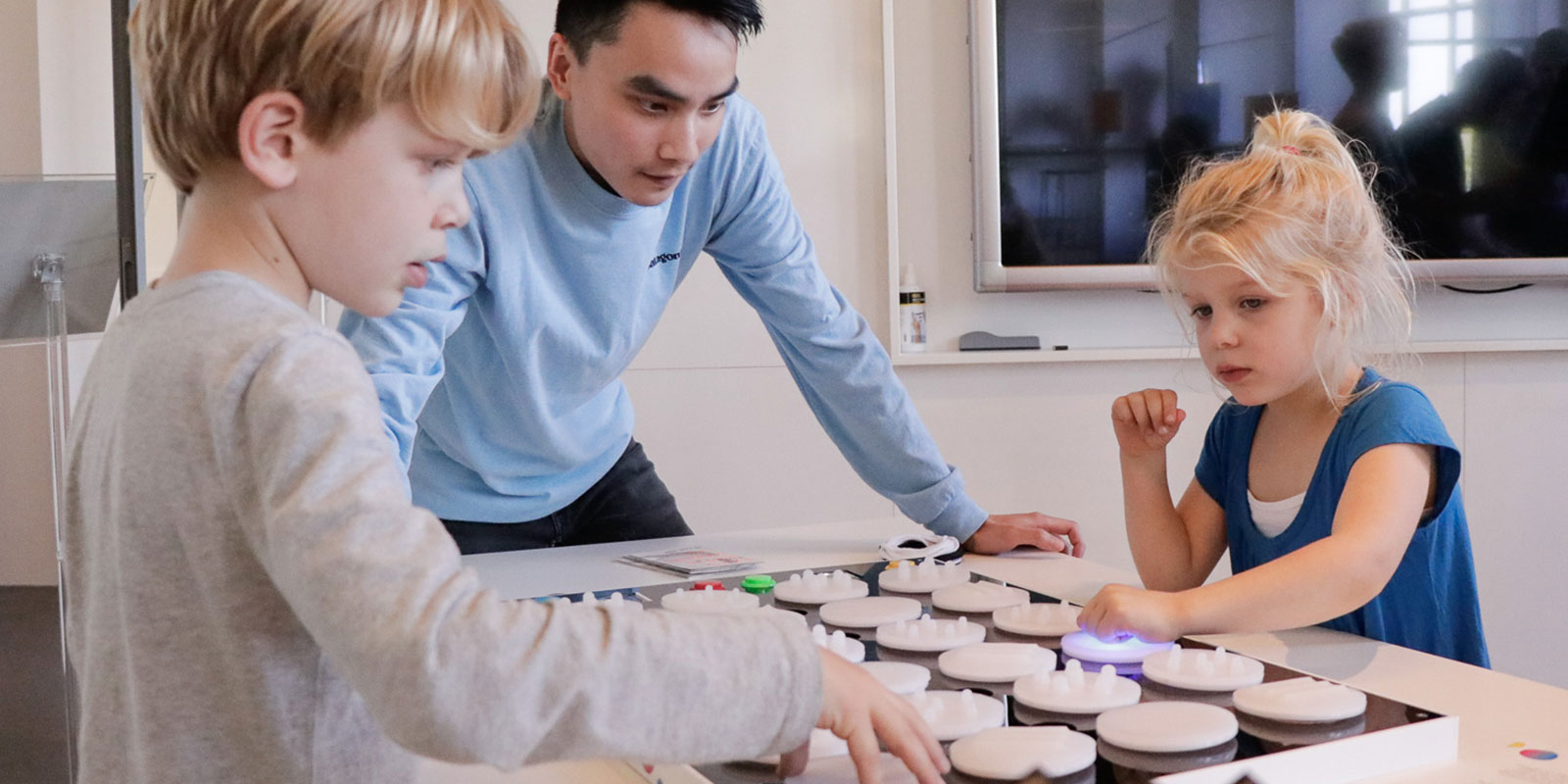In 2019 the minor worked together with research partners: Digital Society School, Digital Life Lab, Visual Methodologies Collective, and Fashion Research & Technology
Toys for Therapy
Children with a spastic hand as a result of cerebral palsy, are recommended and encouraged to do expercises at home on a daily basis. But these physical therapies for 8-12 year olds are often uninviting, repetitive and boring. This project brings together digital and physical interfaces that re-center the fun in play, accounting for the ability and therapeutic needs of children with cerebral palsy. It resulted in a fast-paced manual game, inspired by all-time favourite “Twister”.
Students: Duy-Linh Pham, Wouter Zijlstra Partner: Tamara Pinos Cisneros (Digital Society School, Digital Life Lab) Coach: Yuri Westplat

Computer Vision Algorithms: Be the Seeing Machine
Step into the seeing machine and help the computer see, using your hands as eyes and trying to translate the felt sensations into difficult decisions posed by the seeing machine. Answer the questions of the computer to your best abilities to help it understand. Is the machine’s image a match to what you pictured in your mind? Be The Seeing Machine is a critical statement piece, in the form of an interactive VR installation that offers the user a thought-provoking experience of computer vision algorithms and the systems of classification they are built upon.
Students: Anna Schiffels, Moritz Steinbeck, Andres Pinto Partners: Carlo de Gaetano, Maarten Groen & Dan Xu, (Visual Methodologies Collective & the Digital Society School) Coach: Yuri Westplat


Exclusive Design: The Wah Wah Machine
Eric wants to play the guitar, but the form factor of traditional guitars forms an impossible hurdle for him to cross. He will need a tailor-made assistive device that allows him to improvise on the guitar. Eric’s situation was studied, and all guitar conventions were abandoned to imagine an impossible, improbable and maybe even nonsensical instrument. Does the exclusive design of a guitar lead to inclusive design principles for the design of musical instruments? The outcome was a fully customizable, ergonomic guitar interface that allows Eric to improvise freely.
Students: Rick de Vos, Elisa van der Burg, Audrey Boulland Partners: Eric Groot Kormelink (HUB) & Vasilis van Gemert (CMD) Coach: Yuri Westplat



To Make (Non)Sense
Paradoxically, sense is often connected with logic, deductive thinking, rational actions and outcomes that are anticipated by hypotheses. Actual sensing: feeling, seeing, smelling, hearing, proprioception are less and less prominent modes of making sense. We neglect them to the point of reducing them to bare necessities and needs of the modern (hu)man. Making Non-Sense challenges your sensory apparatus with a number of probes that have in common the fact that they deal with forces we cannot see, for example by using static electricity to create dynamic patterns in garments.
Students: Asle Lundorff, Neza Praprotnik, Melissa de Bie Partner: Rebecca Breuer (Fashion Research & Technology) Coach: Marjolijn Ruyg


